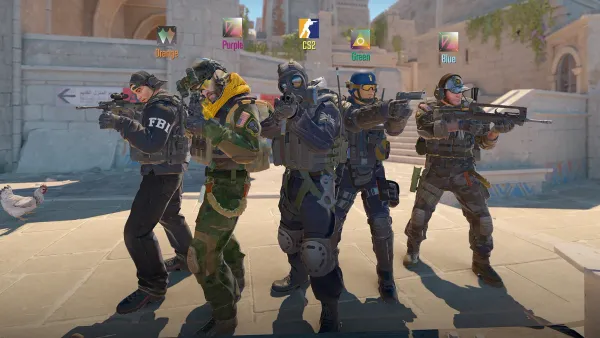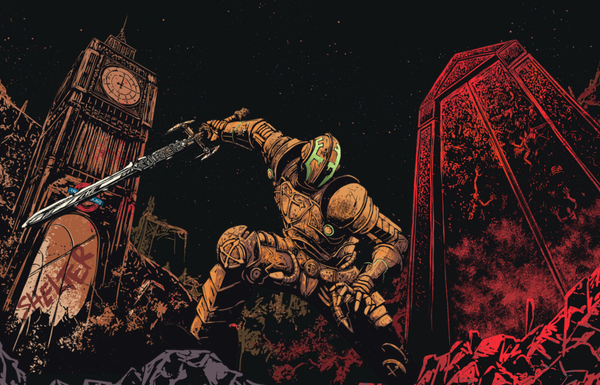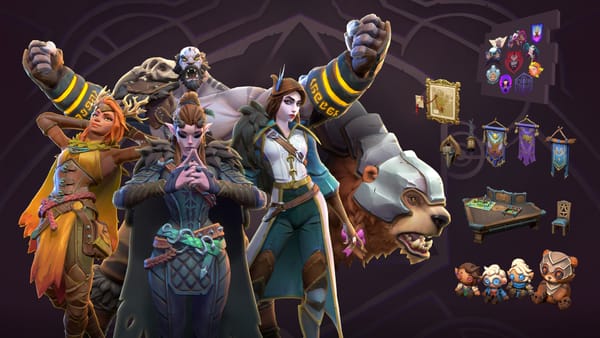Is there life beyond live service gaming?
Can we come back from the era of the forever game?

My guest for this week’s issue of Multiplier is Chris Button. Chris is the editor of GadgetGuy and an award-nominated journalist who covers games and consumer technology. Naturally, you can find his work over on the GadgetGuy website. You can also follow him via Bluesky.
Fergus: Gaming trends come and go all the time, from microtransactions like horse armor and DLC passes to entire genres like the battle royale. Even so, it sometimes feels like live service gaming is forever. When I was younger, the idea of any game being updated and expanded upon in perpetuity was alluring but an anomaly. Who doesn’t want a game they can buy once and play forever? Nowadays, it feels like it’s the ghost that almost every publisher is chasing. That’s not the biggest shock though. Why wouldn’t you want to be the company that makes the next World of Warcraft or Fortnite?
The problem is the odds have never been great and every game that does manage to overcome those expectations only adds to the competition. Anything that releases into the market nowadays is fighting to explain itself against games that players already know how to play, sell itself against games that players may have sunk their money into and compete against rivals that have likely had the benefit of not just a bigger developer budget but also a post-release one as well. That’s not an insurmountable challenge but even last year’s live service biggest success stories pale in comparison to the graveyard of games that don’t make it. Often, those that do win the lottery can end up shackled to that success.
It’s no surprise that – according to figures included in Newzoo’s 2024 PC & Console Gaming Report – older games account for significantly more playtime than newer ones nowadays. If you’re the kind of person who jumps from new release to new release, you might be in the minority. Given the upheaval in the global economy, it’s hard to imagine that dynamic shifts too much in the years ahead. All trends fade though. Eventually, audiences will want something new. All the same, it’s hard to say whether players or publishers and developers will sour on live service gaming first?

Chris: I think about that study a lot. In 2023, so much of the gaming media I read and social media I follow was all-in on Baldur’s Gate 3. It’s an incredible game and I love that it was hugely successful by all reports. But to then read that it reportedly accounted for less than 1% total gameplay time in 2023 broke something in my brain.
My confession to the masses is that I’m an avid Fortnite player. But as fun and vibrant as its zany gameplay is, I’m primarily drawn to Fortnite as a vehicle for socialising. I have a group of friends that play most weekends, and we all jump on voice chat to chew the fat while snagging the occasional Victory Royale. The fact that it’s such a hilarious cross-pollination of IPs, like Godzilla hitting the griddy while wearing Nike Airs, is just a bonus.
That’s an exception to my usual gaming habits, mind you. I love a self-contained game that doesn’t monopolise my time. However, as the data suggests, I’m in the minority. Whenever I see a cool new game from a small developer, my first reaction is excitement, quickly followed by fear. How will they compete in a market dominated by a handful of ongoing games? Will players part with their dwindling disposable income on an unknown quantity versus the next battle pass for the game they already know they enjoy?
It’s apt you mention World of Warcraft; I’m halfway through Jason Schreier’s book about Blizzard, so WoW’s popularity is fresh in my mind. When it launched, the game exceeded already-high internal expectations, so Blizzard pooled resources from every other team to focus on its newfound cash cow. History keeps repeating itself too; Bungie went from being the ‘Halo studio’ to leaning all the way in with Destiny. Rare became synonymous with Sea of Thieves, and so on.
But as you say, we only have so much time and money, so live service is not a golden ticket to success. Just ask the folks behind Concord. I’m not convinced it’s a matter of changing trends because the sales and player counts for existing games remains strong. Helldivers 2 cracking the market is the exception, not the rule, but it shows that there’s still an appetite for fresh live service experiences. And take a look at how many older games dominate the local sales charts.
One element of live service games I outright hate is the expectation it places on other games. For many, it’s not enough to play a game and be done with it. Players have become conditioned to expect post-launch updates, additional content and DLC, which has led to nearly everything shipping with a roadmap. It’s less about what’s available now, and more about the vision of what a game could be. I get second-hand frustration whenever I see a social media comment or forum post begging for DLC or a sequel to games like Unpacking. No! Those games are perfect the way they are! Or when friends spent hundreds of hours playing Animal Crossing New Horizons, only to lament a supposed lack of content. Games don’t have to last forever! In fact, I’d argue that most games shouldn’t try to last forever.
But that wouldn’t generate a steady revenue stream for shareholders, would it now, Fergus?

Fergus: I mean, if you follow the money then the math adds up quickly.
The cost of game development has skyrocketed over the past few decades, even as other barriers in the industry have eroded. It’s not hard to imagine how the need for studios to find that funding has met its match in the sky-high potential that comes with live service gaming. Any chance — however low —to pop off and become the next Helldivers or World of Warcraft is probably a lot more alluring than the alternative to a potential investor. I strongly suspect that games with a more fixed financial model and set of expectations attached to them simply aren’t getting funded as often as they used to because of those perceived limits. I don’t think it’s quite as clear-cut as “If you’re not building someone’s forever game, forget about it!” But at the same time, the landscape that determines which games get funded feels like it’s trending from an uneven playing field to an utterly lop-sided one fairly fast.
What’s potentially even more interesting is how central the idea of content has become. As you mentioned, almost every success is met with an appetite for MORE. However, when you mentioned your forever game of choice I think it’s telling that the volume of things to do in Fortnite isn’t the thing you called out.
The thing you pointed to was the ability of live service titles like this to act as a vehicle for hanging out with your friends. In some respects, the relentless support for live service games like Fortnite isn’t about giving you more things to do but more things to talk about. Games, especially multiplayer-oriented ones, are intrinsically social and if you run out of new things to say, that silence creates an opening for one conversation to end and another to start.

Chris: Alanah Pearce made a great video about the state of game funding a while ago, which points to a lot of what investors want from video games. I think it backs up exactly what you’re saying about why a lot of smaller, arguably more interesting, projects aren’t getting off the ground.
To me, it seems less about fitting a rigid live service model, and more about being anything that will secure ongoing revenue. Even Donkey Kong Bananza is getting some live service-lite content, which looks like an ill-conceived attempt to elongate the tail of an otherwise great single-player game. It all fits that dreaded capitalism ethos of continual growth at all costs, no matter the consequences. We’ve both seen plenty of it in our day jobs with the consumer tech industry’s generative AI infatuation!
Earlier this year, I learned that for smaller (in the relative sense) publishers like Devolver Digital and Team 17, their main sources of revenue are long-tail sales of their back catalogues. Those labels don’t sign games purely designed to be played long-term. Instead, they build a diverse portfolio of good games that spread via word of mouth, and people routinely pick up during seasonal sales. I’m not a smart business guy by any stretch, but that strikes me as a much more sustainable way of investing in games. One that still gets cool and creative stuff made. Of course, those two publishers are big enough to be picky about what they fund, but I’d like to see more labels taking that approach. Raw Fury is another good one to add to the list.
That social element of games is oft-overlooked, I reckon. Have you ever tried to get a group of friends to play another game, after years of playing the same game? It’s like trying to herd cats! As much as I like playing Fortnite, I value novelty and new experiences over doing the same thing time and time again. But Fortnite, through its accumulated social and cultural capital, ends up being the path of least resistance to reliably hanging out with a friend group. And I think that’s partly the intent behind some of these games; to be so unmissable that you can’t afford not to play them, at the expense of having time to play other games.
Give me a sub-10-hour game with a ripper story, and I’m set. Which is to say, play The Drifter. It’s great.




